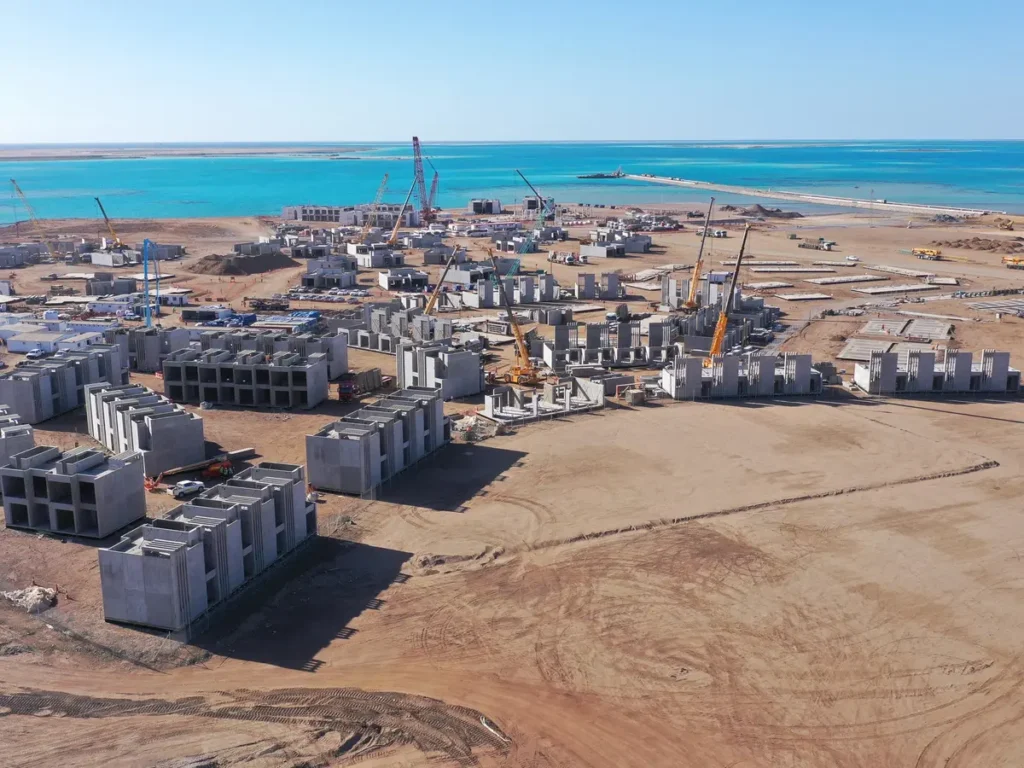Saudi Arabia is racing toward a bold transformation, one that aims to turn the Kingdom from an oil-dependent nation into one of the world’s most exciting tourism destinations. As part of its grand Vision 2030 initiative, the Kingdom has embarked on an ambitious plan to build 300,000 new hotel rooms by the end of the decade. This vast hospitality expansion is not just about bricks and mortar; it’s about reinventing Saudi Arabia’s global image, opening its doors wider to the world, and crafting unforgettable experiences that blend luxury, heritage, and innovation.
A Vision Beyond Oil
For decades, Saudi Arabia was primarily recognized as the world’s leading oil producer and a deeply traditional society with limited access to foreign visitors. That perception began to shift in 2016 when Crown Prince Mohammed bin Salman announced Vision 2030, a sweeping blueprint for economic diversification. Tourism emerged as a cornerstone of that vision, a way to showcase the Kingdom’s cultural depth, natural beauty, and modern ambition.
The 300,000 new hotel rooms are part of a larger national goal to attract 150 million visitors annually by 2030, positioning Saudi Arabia among the top five global tourism destinations. This transformation is being fueled by billions of dollars in investment from both the public and private sectors, as well as partnerships with leading international hospitality brands.
The Hospitality Boom Across the Kingdom
From the futuristic megacity of NEOM to the ancient wonders of AlUla, hotel construction is underway across Saudi Arabia’s vast landscape. Each region is being developed to highlight its unique character and appeal to diverse types of travelers, from luxury seekers and adventure lovers to pilgrims and cultural explorers.
In Riyadh, the capital, sleek skyscrapers and high-end hotels are rising to host international conferences, sports events, and entertainment festivals. Jeddah, the gateway to the Red Sea, is developing luxury waterfront resorts that combine Arabian aesthetics with contemporary elegance. Along the coast, the Red Sea Project is creating an ultra-luxury tourism destination featuring coral reefs, desert islands, and sustainable eco-lodges designed to set a global standard in green hospitality.
Meanwhile, AlUla, a stunning open-air museum of ancient tombs and sandstone formations, is becoming a cultural jewel, with boutique resorts that blend seamlessly into the natural surroundings. The hospitality boom extends even to Mecca and Medina, where large-scale hotel expansions are designed to accommodate the growing number of religious tourists performing Hajj and Umrah.

International Partnerships Fueling Growth
Saudi Arabia’s tourism drive has attracted some of the biggest names in global hospitality. Major hotel groups such as Marriott, Hilton, Accor, Hyatt, and IHG have signed agreements to open or expand their presence in the Kingdom.
These partnerships bring not only world-class brand recognition but also expertise in training, sustainability, and digital innovation. The collaboration ensures that Saudi Arabia’s hospitality offerings meet international standards while maintaining a distinctly local character rooted in Arabian culture and hospitality traditions.
Local developers like Red Sea Global, Diriyah Company, and ROSHN are leading the charge in developing integrated resorts, heritage hotels, and entertainment hubs that merge modern design with the Kingdom’s history and natural beauty.
Training a New Generation of Saudi Hoteliers
Building 300,000 hotel rooms requires more than construction; it demands a skilled workforce to manage, operate, and deliver exceptional guest experiences. Recognizing this, the Kingdom has launched numerous hospitality training programs aimed at empowering young Saudis to join the tourism sector.
Institutions such as the Saudi Tourism Academy and collaborations with international hospitality schools are equipping thousands of students with practical experience in hotel management, culinary arts, event planning, and sustainable tourism. This emphasis on human capital not only supports job creation, estimated at over one million tourism-related jobs by 2030, but also ensures that Saudi Arabia’s tourism growth is sustainable and locally driven.
Sustainability at the Core
Saudi Arabia’s hospitality expansion isn’t merely about scale; it’s also about sustainability. The Kingdom is investing heavily in eco-friendly construction, renewable energy integration, and conservation-focused tourism projects that protect the country’s natural resources.
The Red Sea Project, for instance, is designed to operate on 100 percent renewable energy, with zero waste-to-landfill and strict measures to preserve marine biodiversity. Similarly, NEOM’s Sindalah Island aims to redefine luxury travel through carbon-neutral operations, smart mobility, and sustainable architecture.
By embedding sustainability into its tourism strategy, Saudi Arabia is signaling to the world that economic growth and environmental responsibility can go hand in hand, a message that resonates strongly with today’s environmentally conscious travelers.
Cultural Tourism: A Window to Saudi Heritage
Beyond luxury and leisure, Saudi Arabia is also promoting cultural and heritage tourism as a key pillar of its national identity. Visitors can now explore UNESCO World Heritage sites such as Diriyah, the birthplace of the Saudi state, or Hegra, the ancient Nabatean city that rivals Petra in beauty and history.
The Diriyah Gate Development is set to become one of the Kingdom’s most significant cultural landmarks. It blends traditional Najdi architecture with modern urban design, creating a destination that celebrates Saudi Arabia’s deep-rooted heritage while offering fine dining, museums, and boutique hotels.
The expansion of festivals like Winter at Tantora, Jeddah Season, and Riyadh Season further boosts cultural tourism, showcasing local music, cuisine, art, and performances that attract both domestic and international audiences.

Adventure and Nature Tourism on the Rise
Saudi Arabia’s diverse geography, from desert dunes to lush mountains and pristine coastlines, offers endless potential for adventure and nature tourism. The new wave of hotel developments aims to support this by offering eco-lodges, desert camps, and resorts near natural attractions.
The Asir region, with its cool mountain climate and green terraces, is being promoted as a new haven for hikers and nature lovers. The Empty Quarter, the world’s largest sand desert, is becoming a playground for desert safaris and stargazing experiences. On the Red Sea coast, diving and snorkeling adventures among coral reefs are quickly gaining popularity.
These developments signal that Saudi Arabia wants to provide travelers not only with luxury but also with authentic, memorable encounters with nature and local culture.
The Role of Religious Tourism
While Saudi Arabia diversifies its tourism offerings, religious tourism remains a vital cornerstone of the sector. Every year, millions of Muslims from around the world travel to Mecca and Medina for Hajj and Umrah.
To accommodate this growing number of pilgrims, the government is expanding hotel capacity near the holy sites, improving transportation links, and enhancing guest services. The expansion aligns with Vision 2030’s goal of welcoming 30 million Umrah pilgrims annually, supported by world-class hospitality and infrastructure.
Infrastructure and Connectivity
Building 300,000 hotel rooms goes hand in hand with upgrading the Kingdom’s broader infrastructure and connectivity. Major airport expansions are underway, including King Abdulaziz International Airport in Jeddah and King Khalid International Airport in Riyadh, designed to handle millions of additional passengers.
High-speed rail networks, highways, and smart city projects are connecting major tourism hubs, making it easier for travelers to explore the country’s varied attractions. Digital platforms are also being introduced to simplify visa processes, bookings, and travel planning, making Saudi Arabia more accessible than ever before.
Economic Impact and Investment Opportunities
The hospitality boom is a cornerstone of Saudi Arabia’s economic diversification. Tourism’s contribution to GDP is projected to reach 10 percent by 2030, creating new industries and business opportunities in construction, transport, entertainment, and technology.
Global investors are taking notice. The Public Investment Fund, Saudi Arabia’s sovereign wealth fund, is injecting billions into tourism megaprojects, while foreign investors are encouraged through incentives and partnerships. This synergy between public ambition and private enterprise is positioning the Kingdom as a magnet for long-term investment.
Challenges Along the Way
While the pace of development is impressive, Saudi Arabia faces challenges in achieving its tourism vision. Building 300,000 hotel rooms within a decade requires careful planning, skilled labor, and effective marketing to ensure sustained demand.
Cultural adaptation is another key factor. As the Kingdom opens up, balancing modernization with tradition remains crucial. The government is continuously refining policies to ensure that tourism growth respects Saudi values while remaining attractive to international visitors.
A Future Shaped by Ambition
Saudi Arabia’s transformation into a global tourism hub is more than a national project; it’s a statement of intent. The 300,000 hotel rooms being built across deserts, coastlines, and ancient cities symbolize a broader journey toward openness, innovation, and global engagement.
This tourism revolution represents a new chapter for the Kingdom, one where ancient history meets futuristic design, and where visitors can experience both the soul of Arabia and the promise of tomorrow.
A Kingdom Ready to Welcome the World
As cranes rise across the skyline and resorts take shape along the Red Sea, Saudi Arabia stands on the brink of a tourism renaissance. The world is watching as the Kingdom redefines itself, not just as a land of oil, but as a land of opportunity, beauty, and hospitality.
With 300,000 new hotel rooms on the horizon, Saudi Arabia’s message is clear: the doors are open, the lights are on, and a new era of Arabian welcome has begun.
Do follow Gulf Magazine on Instagram.
Also Read – VIBRANT VICTORY Caterer Saudi Awards 2026 CelebratesF&B Excellence



